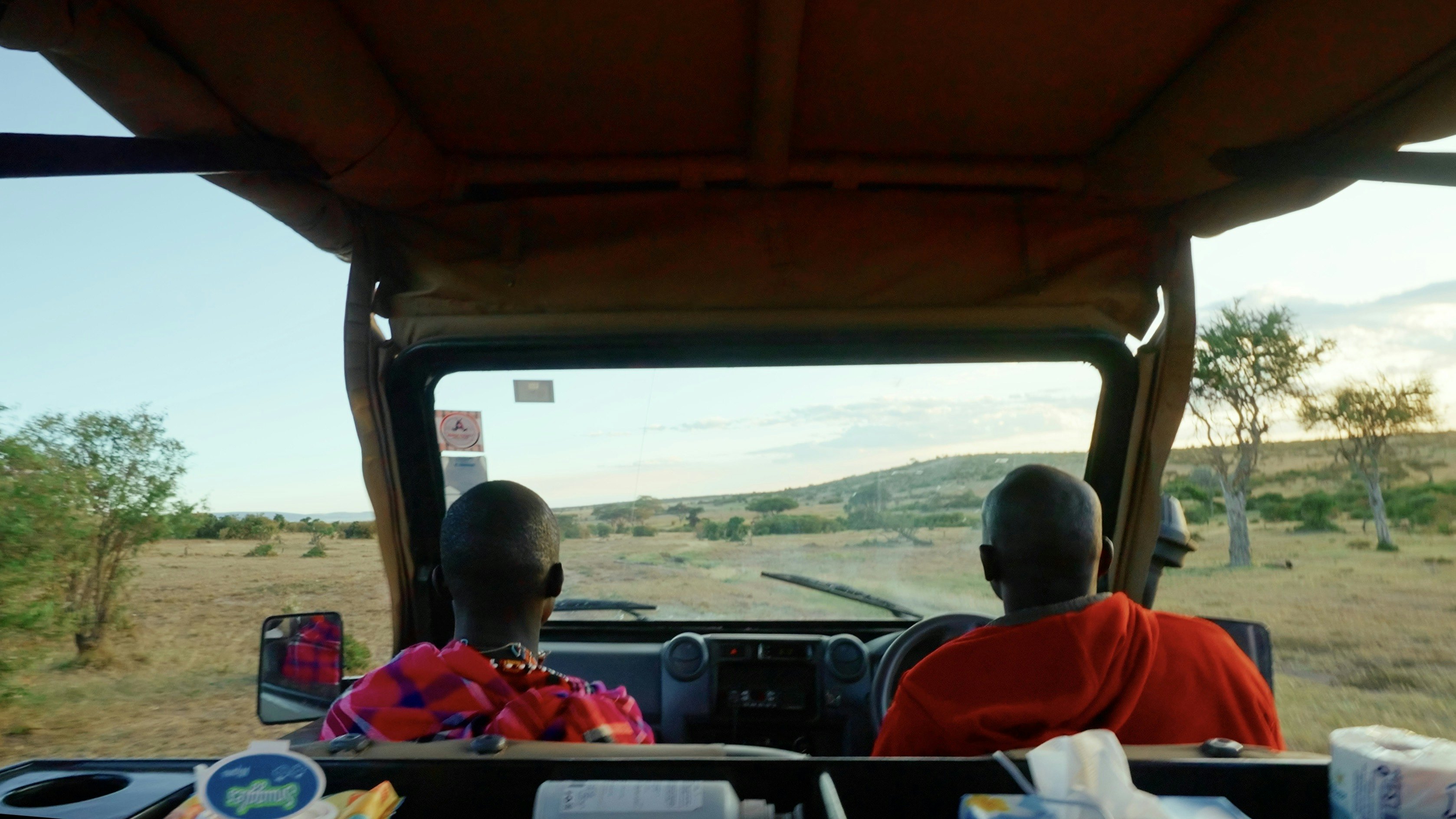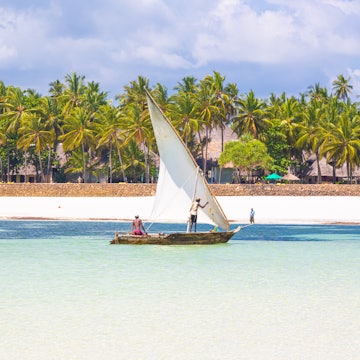
Copy My Trip: Galloping with giraffes on safari in Kenya
Aug 4, 2023 • 6 min read

On my safari, I learned the important difference between a “tower” vs a “journey” of giraffes © Jack Pearce
As Lonely Planet’s creative director, I have the privilege of traveling for work and getting to some pretty remarkable places.
I usually travel with excess baggage filled with camera equipment, clipboards of paperwork and the frantic feeling in my stomach that (although I haven’t slept in days and there’s no chance of rest on the horizon) I’m not getting nearly enough done. My trips often focus on documenting human stories and hitting up recommendations I’ve gotten – which means there’s long been one type of trip that’s evaded my assignments and therefore occupied my damn-if-I-could-only-do-that brain space for years: the safari.
So when the luxury trip crafters of Tropical Sky reached out about their safari offerings in Kenya, I jumped at the opportunity to trade nine-to-five for the Big Five. Here are some highlights from a trip that allowed me to disconnect from gadgets, Google Drive and the daily grind.
A trip that left me simply gobsmacked.

Where did you stay? What was the vibe?
I stayed at two Porini camps: the Porini Rhino Camp at the Ol Pejeta Conservancy, which is the largest black rhino conservancy in Africa; and Porini Mara Camp, located in the Ol Kinyei Conservancy, the first conservancy established in the Masai Mara region, and built in partnership with the local Maasai people.
Unlike other safari-camp experiences, Porini’s ongoing dedication to land and animal conservation means that there is only one tent for every 700 acres. It’s hard to visualize what that means (who thinks in acres?) – but, trust me, it was truly serene. The structures are all impermanent, meaning there’s no disturbance or destruction to the land, and each has a view of the surrounding conservancy (and the animals that roam there) as far as the eye can see. The tents themselves are quite comfortable, even almost posh, with hot-water-bucket showers available upon request and running water in the bathrooms. The staff even sneaks hot-water bottles in between your sheets to warm up your bed at night. One of the biggest bonuses? Waking up to coffee in bed before the sunrise, as a Maasai warrior ensures everyone is ready and well caffeinated before the morning game drives.
It was meaningful to me that Tropical Sky focused on creating an environmentally friendly trip; hearing about how Porini and Gamewatchers sustainably steward the land really drove this home. As Simon Nkoitoi, the senior warden of Ol Kinyei Conservancy, told me, “We believe in partnering with the community because the land belongs to the community and the wildlife belongs to the land.” In practice, this means an ongoing commitment to creating space for wildlife through 22 conservancy projects and generating income for the Maasai people through the leasing of their land. There’s even a wildlife and tourism university right in the center of the conservation project that trains local warriors to become guides.

Did you meet a lot of other visitors? Locals? Where?
Speaking of our guides, we had incredible tours led by local Maasai. I am still in touch with Ben, our guide from Porini Mara, to whom I promised a copy of our forthcoming new edition of the Lonely Planet Kenya guide (coming in November!).
In addition to the locals, though, I was also energized by the company of my fellow travelers. Every night, Porini would serve dinner in one seating, which let everyone staying on the property get to know each other. Among the group was the Paradise family from Boulder, Colorado, whom I met on our first night at the Porini Rhino camp, and with whom I’ve kept in touch. We connected over our love of travel and records: Will Paradise owns Paradise Found, the last record shop in Boulder, and Annika Paradise is the co-author of Wonder Year, a how-to guide for traveling around the world with your family. It seems like we were fated to meet.

What’s your favorite photo from the trip and where was it taken?
I took approximately one trillion photos on this trip…and I have no idea what to do with them. There’s the one of the lioness stalking a group of water buffalo. The one of the leopard in the tree. And, of course, that baby elephant. But the most memorable moment was one I caught on video – not just the most vivid moment of the trip, but perhaps one of the most lasting moments in my travels to date.
After a long stretch of driving, we saw a huddle of large structures in the distance: a mass at first, and then almost a dozen individual vertical stretches on the horizon. Like a camouflaged city, this new natural skyline came into focus as a tower of giraffes: a tower, I later learned, is what a group of giraffes is called when they’re stationary. As we approached, however, the tower became a journey – a journey, so I was told, is a group of giraffes running. Our cart wheeled towards the journey, and the journey ran all around us. (“Running” might be a generous term given the speed these creatures were able to maintain.) It was as if they were in slow motion, circling around us.
In this moment I felt like I was truly part of the pack, and somehow connected with any and everyone who’s ever witnessed animals of this stature in nature. It was a privileged view, a mind-blowing view – psychedelic almost – and one I’ll absolutely never forget.

What is one thing that you did not expect?
What it would feel like to gallop with giraffes, for one.
The biggest standout, though, was just how much time was spent actually game driving. “Duh!” you might be snarking, “you’re on safari.” Yet until I was on the trip, a safari was a noun. Then it became a verb. And, it turns out, it can be pretty hard-core. This is a gush, by the way, not a complaint: we were up before sunrise with breakfast served along the way and often not back until mid afternoon. The drives in the conservancies are long and you’ll encounter few other cars – a rare treat in a sought-after animal sanctuary like this one. As such, the moments in between ogling zebras or wildebeests are meditative. You, the wind, you the sun, the Kenyan landscape…on and on and on for hours.
What do you wish you had packed?
The domestic hopper flights that take you from Nairobi to the conservancy then from camp to camp are teeny-tiny 12-seaters, so you can’t pack much in the first place. And you really don’t need to. (This is something coming from a lifelong over-packer.) Still, I wish I had packed less stuff and more warm layers. It did get chilly on our early-morning rides and after sunset.
Annie stayed in Kenya at the invitation of Tropical Sky. Lonely Planet does not accept freebies in exchange for positive coverage.













